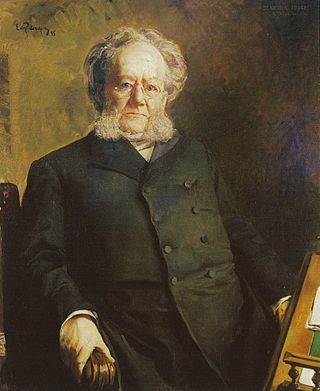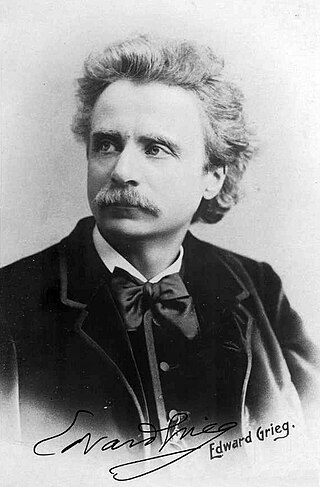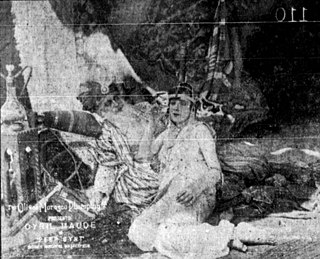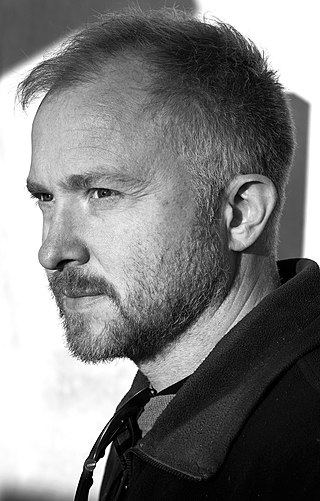
Henrik Johan Ibsen was a Norwegian playwright and theatre director. As one of the founders of modernism in theatre, Ibsen is often referred to as "the father of realism" and the most influential playwright of the 19th century, as well of one of the most influential playwrights in Western literature more generally. His major works include Brand, Peer Gynt, Emperor and Galilean, A Doll's House, Ghosts, An Enemy of the People, The Wild Duck, Rosmersholm, Hedda Gabler, The Master Builder, and When We Dead Awaken. Ibsen is the most frequently performed dramatist in the world after Shakespeare, and A Doll's House was the world's most performed play in 2006.

The Paus family is a Norwegian family that first appeared as members of the elite of 16th-century Oslo and that for centuries belonged to Norway's "aristocracy of officials" as priests of the state church, judges and other higher government officials, especially in Upper Telemark. Family members later became involved in shipping, steel and banking. The family is particularly known for its close association with Henrik Ibsen.

Peer Gynt is a five-act play in verse written in 1867 by the Norwegian dramatist Henrik Ibsen. It is one of Ibsen's best known and most widely performed plays.
"In the Hall of the Mountain King" is a piece of orchestral music composed by Edvard Grieg in 1875 as incidental music for the sixth scene of act 2 in Henrik Ibsen's 1867 play Peer Gynt. It was originally part of Opus 23 but was later extracted as the final piece of Peer Gynt, Suite No. 1, Op. 46. Its easily recognizable theme has helped it attain iconic status in popular culture, where it has been arranged by many artists.

Love's Comedy is a comedy by Henrik Ibsen. It was first published on 31 December 1862. As a result of being branded an "immoral" work in the press, the Christiania Theatre would not dare to stage it at first. "The play aroused a storm of hostility," Ibsen wrote in its preface three years later, "more violent and more widespread than most books could boast of having evoked in a community the vast majority of whose members commonly regard matters of literature as being of small concern." The only person who approved of it at the time, Ibsen later said, was his wife. He revised the play in 1866, in preparation for its publication "as a Christmas book," as he put it. His decision to make it more appealing to Danish readers by removing many of its specifically Norwegian words has been taken as an early instance of the expression of his contempt for the contemporary Norwegian campaign to purge the language of its foreign influences.
Peer Gynt is a play by Henrik Ibsen named for its main character, based on the fairy tale Per Gynt.

Gjende or Gjendin is a lake in Vågå Municipality in Innlandet county, Norway. It is located in the Jotunheimen mountain range and also inside Jotunheimen National Park. The proglacial lake shows typical characteristics of glacial formation, being long and narrow, with steep walls. The lake is 18 kilometres (11 mi) in length and only 1.5 kilometres (0.93 mi) in width at the broadest point. Gjende has a characteristic light-green color resulting from the large quantity of rock flour which is discharged into the Gjende by the Muru river. The river Sjoa provides the outlet from Gjende at Gjendesheim, and flows eastward into the Gudbrandsdalslågen river.

Espen Henrik Skjønberg was a Norwegian actor of stage, screen, and television.

Peer Gynt, Op. 23, is the incidental music to Henrik Ibsen's 1867 play Peer Gynt, written by the Norwegian composer Edvard Grieg in 1875. It premiered along with the play on 24 February 1876 in Christiania.

Christiania Theatre, or Kristiania Theatre, was Norway's finest stage for spoken drama from 4 October 1836 to 1 September 1899. It was located at Bankplassen by the Akershus Fortress, in central Christiania. It was the first lasting public theatre in Norway and the national stage of Norway and Oslo during the 19th century.
Besseggen or Besseggi is a mountain ridge in Vågå Municipality in Innlandet county, Norway. The 1,634-metre (5,361 ft) tall mountain ridge is located in the Jotunheimen mountains within Jotunheimen National Park. The mountain sits about 46 kilometres (29 mi) southwest of the village of Vågåmo and about 30 kilometres (19 mi) northwest of the village of Beitostølen. The mountain ridge is surrounded by several other notable mountains including Veslfjellet to the east and Besshø to the northwest. The ridge runs between the lakes Gjende and Bessvatnet.

Dyre Vaa was a Norwegian sculptor and painter.

Jakob Henrik Gerhard Fjelde was a Norwegian-born American sculptor. He is remembered as both a prolific portraitist and the creator of public monuments. One of his better known works is the one dedicated to the 1st Minnesota Infantry (1897) located at Gettysburg Battlefield where its 262 members suffered 215 casualties.
Rolf G. Fjelde was an American playwright, educator and poet. Fjelde was the founding president of the Ibsen Society of America which is dedicated to promoting academic and public interest in the work of Henrik Ibsen.

The Peer Gynt Prize or the Peer Gynt Award is a private Norwegian prize presented annually by the private commercial company Peer Gynt AS during the Peer Gynt Festival, also organised by the same company. The Peer Gynt Prize is named after the main character in Peer Gynt (1867), a five-act play in verse by Norwegian dramatist Henrik Ibsen. The prize is awarded to people or institutions who have marked themselves in a positive way nationally and internationally. However, the prize has received criticism for misrepresenting the Peer Gynt character, who is portrayed in Ibsen's play as quintessentially immoral and selfish.
Michael Elliott, OBE was an English theatre and television director. He was a founding director of the Royal Exchange Theatre in Manchester.

Ibsenhuset is a Norwegian cultural centre in the city of Skien, Telemark county. The building houses several facilities for concerts, theater performances, opera, exhibits, conferences, courses, meetings and other events. There are also a restaurant and the town's main library in the building. International and national artists and entertainers have performed at Ibsenhuset. The name Ibsenhuset is derived from Henrik Ibsen's last name and from "huset", Norwegian for a house or building. Ibsen was born in Skien 20 March 1828 and lived in different locations in town until he was 15 years old. The Norwegian Ibsen award is annually presented at Ibsenhuset to promising playwrights.

Peer Gynt is a surviving 1915 American fantasy silent film directed by Oscar Apfel and Raoul Walsh and adapted from the Henrik Ibsen play by Oscar Apfel. The film stars Cyril Maude, Myrtle Stedman, Fanny Stockbridge, Mary Reubens, Mary Ruby and Winifred Bryson. The film was released on September 16, 1915, by Paramount Pictures.

Sommerroparken, formerly known as Solliparken, is a small park between the streets of Sommerrogata and Henrik Ibsens Gate in the Frogner district of Oslo, Norway. It consists of a narrow grass-covered strip with park benches, ornaments, trees and bushes.

Håkon Anton Fagerås is a Norwegian sculptor. He works within the figurative tradition, and is one of a relatively small set of sculptors working in marble.















